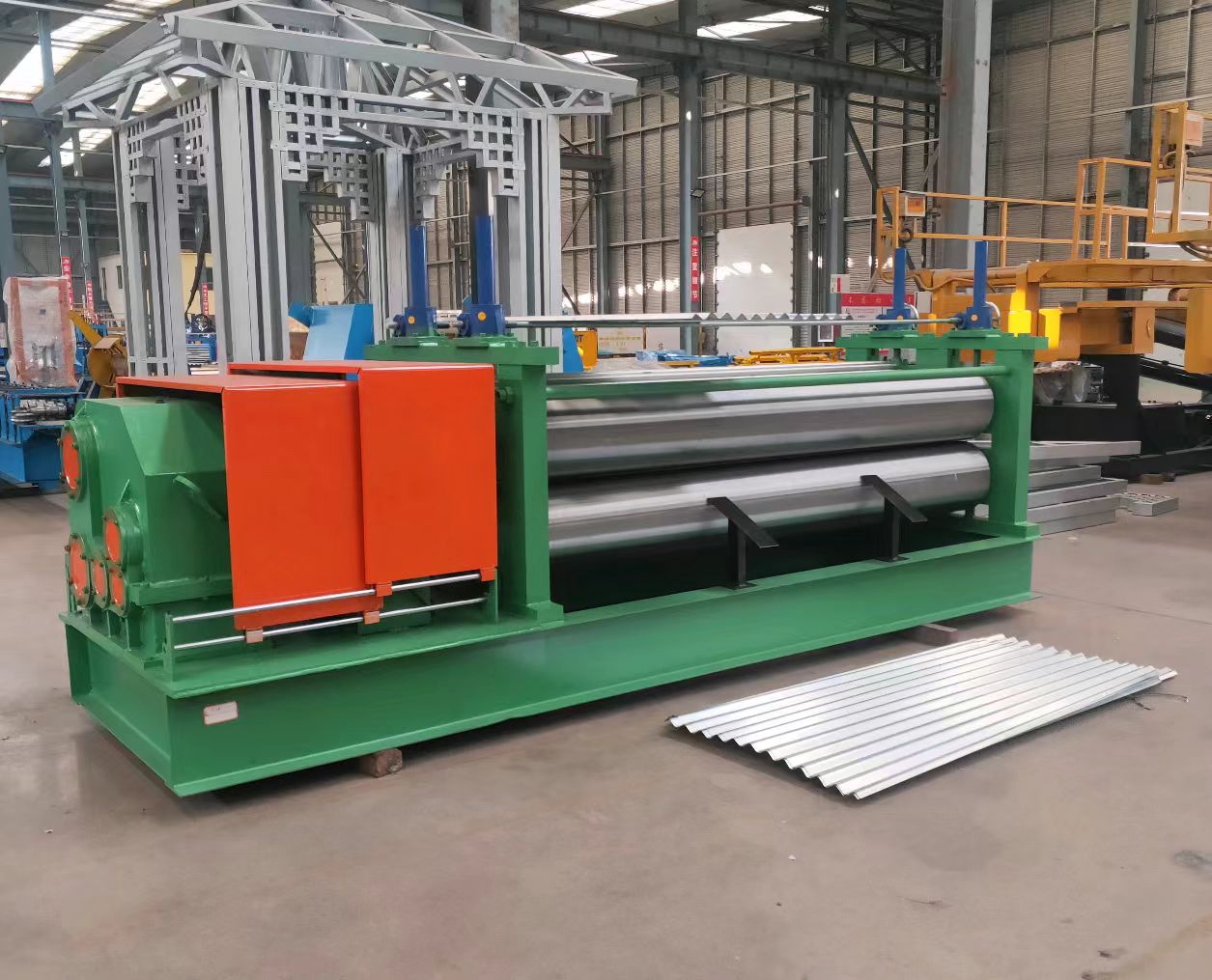
TAG: 3-meter corrugated horizontal roll forming machine 3-6 meter wide corrugated roof machine Metal bucket corrugated roof panel rolling forming machine
Price:
Detailed Introduction
How to choose a horizontal corrugated cross forming machine that suits your needs
Choosing a horizontal corrugated cross forming machine that suits your needs requires comprehensive consideration from multiple aspects. Here are some key points:
Production Demand
Product specifications: Clearly define the size range of the corrugated products to be produced, including the height, width, spacing of the corrugations, as well as the length, width, and thickness of the board. Ensure that the selected molding machine can meet these size requirements and has corresponding accuracy and stability to ensure product quality.
Production output: Determine the required production capacity based on the enterprise's production plan and market demand. If it is large-scale production, it is necessary to choose molding machines with fast production speed and high degree of automation to improve production efficiency; If it is a small-scale, multi variety production, equipment with high flexibility and easy adjustment can be considered.
Material type: Consider the type of raw materials to be processed, such as metal sheets (galvanized sheets, aluminum sheets, stainless steel sheets, etc.) or plastic sheets (PVC, PE, PP, etc.) of different materials. Different materials may have different requirements for the rolling mill, mold material, and pressure of the forming machine. It is important to ensure that the equipment can adapt to the physical properties of the selected materials.
equipment performance
Pressure and Power: The pressure of the forming machine is one of the key performance indicators, which directly affects the forming effect and quality of the ripples. Select equipment with sufficient pressure based on production materials and product specifications, and ensure that the pressure can be precisely adjusted to meet different production needs. At the same time, the power system should be stable and reliable, able to provide continuous power support.
Accuracy and stability: High precision equipment can produce corrugated products with precise dimensions and regular shapes, which helps improve product quality and consistency. Pay attention to the manufacturing process, component quality, and precision of the control system of the equipment. You can refer to the precision parameters of the equipment, such as dimensional tolerances, parallelism, perpendicularity, etc. Stability is also crucial, as stable equipment can reduce failures and downtime during the production process, and improve production efficiency.
Speed and efficiency: Production speed is directly related to production efficiency and cost. Understand the feeding speed, forming speed, and entire production cycle of the equipment, and choose a forming machine that can have a higher production speed while meeting product quality requirements. In addition, the higher the degree of automation of the equipment, the more it can reduce manual operations, improve production efficiency and product quality stability.
Equipment structure
Horizontal layout features: The stability of the horizontal structure is good, making it easy to transport raw materials horizontally, but also considering the equipment's footprint and spatial layout. Ensure that the equipment can be installed and operated reasonably in the workshop without hindering other production processes.
Rolls and molds: Rolls and molds are the core components of forming machines, and their quality and performance directly affect product quality. High quality rollers and molds should be made of wear-resistant and corrosion-resistant materials, with good surface smoothness and accuracy. At the same time, it is necessary to consider whether the replacement of rollers and molds is convenient and fast, in order to improve production efficiency and flexibility.
Feeding and discharging system: The feeding system should be able to accurately control the conveying speed and position of raw materials, ensuring that the materials enter the forming area uniformly and stably. The discharge system should be able to smoothly send out the formed products, avoiding blockages or damage to the products. Some advanced equipment is also equipped with automatic stacking or packaging functions, which can further improve production efficiency.
Brand and after-sales service
Brand and reputation: Choosing a brand with good reputation and market recognition can ensure the quality and performance of the equipment. You can learn about the reputation and product quality of different brands through online searches, industry consultations, customer reviews, and other methods.
After sales service: Comprehensive after-sales service is crucial for the long-term stable operation of equipment. Understand whether the manufacturer provides after-sales services such as installation, debugging, training, maintenance, and parts supply, as well as the response time and quality of after-sales services. Choose manufacturers who can promptly solve equipment failures and provide technical support to reduce equipment downtime and minimize production losses.
Budget cost
Equipment price: Based on meeting production needs and equipment performance requirements, select the appropriate molding machine according to the enterprise's budget. The prices of equipment from different brands, specifications, and configurations vary greatly. It is necessary to comprehensively compare various factors and choose products with higher cost-effectiveness.
Operating costs: In addition to the purchase cost of equipment, the operating costs of equipment should also be considered, including energy consumption, raw material loss, maintenance costs, labor costs, etc. Choosing equipment with low energy consumption and simple maintenance can reduce long-term operating costs.
Copyright © Cangzhou Guochen Cold Bending Machinery Equipment Co., Ltd. Rights Reserved Sitemap | Technical Support